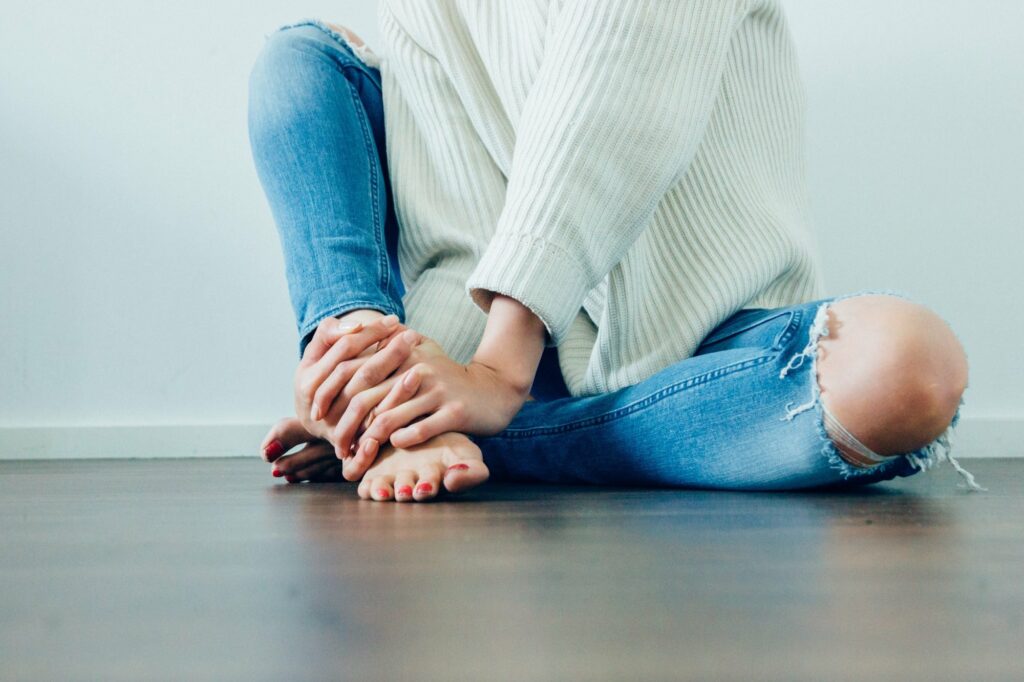
Premenstrual symptoms affect 90% of women at some point in their lives. Many women experience mood swings and cramping before and during their periods as a result of their hormones. PMS is another name for this. PMS and cramps are both common and treatable conditions.
What Is PMS?
Many women experience a variety of symptoms known as premenstrual syndrome (PMS) a week or two before their menstruation. Over 90% of women report experiencing premenstrual symptoms including bloating, headaches, and moodiness. Some women may experience such severe symptoms that they must miss work or school, whilst other women may not be troubled by less severe symptoms.
The majority of women who have PMS are typically in their 30s. Your doctor can offer advice on how to get your symptoms under control.
Common Symptoms of PMS
PMS has been linked to a wide range of symptoms. From cycle to cycle, women might experience PMS of different length and intensity.
Each woman has a unique set of PMS symptoms. You might have both physical and emotional symptoms, such gassiness or bloating, or none. As you age, your symptoms may also alter.
PMS physical signs can include:
- Swollen or tender breasts
- Constipation or diarrhea
- Bloating or a gassy feeling
- Cramping
- Headache or backache
- Clumsiness
- Lower tolerance for noise or light
Emotional or mental symptoms of PMS include:
- Irritability or hostile behavior
- Feeling tired
- Sleep problems (sleeping too much or too little)
- Appetite changes or food cravings
- Trouble with concentration or memory
- Tension or anxiety
- Depression, feelings of sadness, or crying spells
- Mood swings
- Less interest in sex
If your symptoms annoy you or interfere with your regular life, talk to your doctor.
Ways To Relieve PMS Symptoms
Regular Exercise
Get the blood circulating for your general health since exercise is an essential component of a healthy existence. Exercise should be a regular part of your life rather than something you only do when you experience symptoms.
Maintaining a consistent workout schedule may help to reduce PMS symptoms. Regular aerobic exercise increases energy and improves sleep by releasing endorphins, dopamine, and serotonin, which are chemical messengers that can improve mood.
Stress Management
There are several natural methods to relieve stress and encourage relaxation, including breathing exercises, meditation, and yoga. In the weeks before to menstruation, many women report feeling more assertive and aware of their demands. By giving priority to your needs and what nourishes you, allowing for personal downtime, expressing your feelings, and using this constructively
Healthy Foods and Diet
Most of the time, choose nutritious foods. Many PMS symptoms may be reduced by avoiding meals and beverages that include caffeine, salt, and sugar in the two weeks before to your period.
The most popular diet advice is to reduce sugar intake and increase complex carbohydrate intake. Some people could benefit from consuming less salt, which might help to lessen bloating, water retention, and breast soreness and swelling.
Due to the link between caffeine and PMS symptoms including irritability and sleeplessness, caffeine restriction is another frequent diet adjustment.
Enough Sleep
The ability to reduce inflammation, manage cortisol levels, and maintain hormonal balance depends on getting enough sleep. As a result, having a good night’s sleep each night can significantly reduce PMS symptoms.
Sleep for a minimum of eight hours each night. Sleep deprivation has been related to melancholy and anxiety, and it can exacerbate PMS symptoms including moodiness.
Hormonal Birth Control
Bloating, sensitive breasts, and other physical PMS symptoms can be treated using hormonal birth control techniques like the pill or patch. They may also assist some people with emotional symptoms like mood swings.
However, for some people, hormonal birth control might exacerbate mood fluctuations. If you choose this course, you might need to experiment with many birth control options until you discover one that is effective for you.
Choose a continuous pill instead of one that contains a week’s worth of placebo tablets if you’re interested in the drug. Birth control medications that you use continuously can stop your menstruation, which can occasionally help stop PMS.
See your doctor before taking any drugs.
Reduce Stress
Cortisol levels increase while you are under stress. This normally benefits the body since it adjusts and gets stronger once the stress has subsided. When stress becomes ongoing and there are no breaks for adaptation, cortisol levels stay high.
Cortisol has priority over a lot of other hormones in the body, which is an issue. The body’s HPA (hypothalamus-pituitary-adrenal) axis controls both cortisol and sex hormones. Energy is diverted toward manufacturing cortisol under chronic stress, and the HPA axis becomes dysregulated. The hormonal imbalance starts here.
Healthy Sun Exposure
Additionally, it’s crucial to regularly get outside and enjoy some sunlight. Sunlight exposure aids in the production of vitamin D, which is essential for calcium absorption and hormone balance. These steps will assist in reducing high estrogen levels and reducing cramps.
Another great advantage of vitamin D is that it aids in reducing the body’s synthesis of prostaglandins and cytokines, two substances linked to inflammation and discomfort.
A diet high in minerals and enough sunshine may both significantly reduce PMS symptoms.
Integrative Approaches
To lessen PMS symptoms, acupuncture, massage treatment, and aromatherapy (using essential oils) are occasionally recommended.
Bottom Line
For some women, PMS may be crippling. If this describes you, combining the advice in this article is advised.
While there are simple things you may do to treat particular symptoms, using these tactics all at once will have the biggest impact. I frequently discover that people with bad health practices that contribute to inflammation and hormonal imbalances are more prone to have severe PMS symptoms.
You will be healthier and have much less PMS if you follow the above-mentioned actions to increase sleep, lower stress, balance hormones, and other factors.